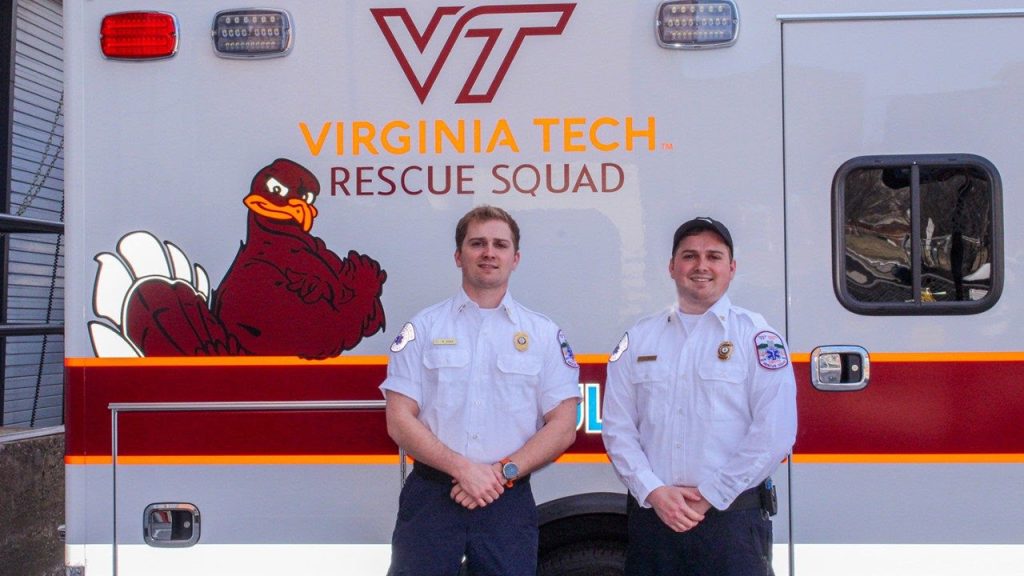
BLACKSBURG — The Virginia Tech Rescue Squad officers brought a specially designed ambulance home to the Blacksburg campus that was put into service on Feb. 6.
The Ford E 350 looks like the three other ambulances, but this ambulance — code name 15-7 — has been designed by the student officers of the rescue squad.
“Having four ambulances will help us run more efficiently, answer calls quicker, and when we have to do patient care, we can do what’s best for the patient,” said Catherine Carter, the 2021 vehicle lieutenant.
The squad responds to an average of 1,200 calls a year, but its officers are preparing to handle a larger campus population in the future, said Carter, a senior majoring in clinical neuroscience.
Virginia Tech’s all-student squad is the oldest volunteer collegiate rescue squad in the country and was first in the Commonwealth of Virginia. The squad provides emergency medical services at major university and athletics events and administers first aid courses for the campus community.
Last year’s officers, Chief Sarah Guida, a 2022 graduate with a degree in public health, and Carter led the ambulance design committee and started the project in the spring of 2021. They were joined by the 2022-23 officers: Chief Connor Duda, a senior majoring in biological sciences, and his twin brother Nathan Duda, the vehicle lieutenant and a senior majoring in environmental science.
The design process took two years to complete. The team first looked at the other ambulances to find what qualities were beneficial and what qualities were a detriment to patient care.
“One thing we focused on was the space: How could we maximize our space to the best of our capacity? In our previous ambulances, we noticed some issues with cabinets being too small or space being wasted while we were cramped in the back of it treating patients,” said Connor Duda.
The students combined what used to be two small trauma cabinets to create a larger and more accessible trauma cabinet, and they added more storage by removing an unnecessary vent under the back seat. They also created a mount for the monitor previously secured by a seat belt.
In 2022, they submitted the final blueprints to Steven Meador at Atlantic Emergency Solutions, a company that makes ambulances for units across the country. By November, the ambulance was built and ready for pickup. The $200,000 vehicle was paid for through the department’s operating budget.
The Duda twins spent their birthday weekend in Florida inspecting the new ambulance. “One of the big things the twins wanted was the Star of Life frosted on the back window, which wasn’t originally there,” said Carter.
“Meador took them on a tour of the plant. They had an entire line devoted to FDNY [the New York City Fire Department], and FDNY have those on the back of their trucks. So, they asked Steven if we could put it on the back of ours. He said we could do it. Now it looks fantastic,” said Carter.
The Star of Life is a six-pointed star with a serpent and a staff in the middle symbolizing Asclepius, a Greek physician. The Star of Life has become a symbol of emergency medical care all around the world.
The squad is growing rapidly. This year’s squad has 44 full members — up from 35 last year — and 15 probationary members going through the training process. The officers in charge are finding new ways to accommodate the expected growth of the squad as well as the university.
Linda Hazelwood for Virginia Tech


